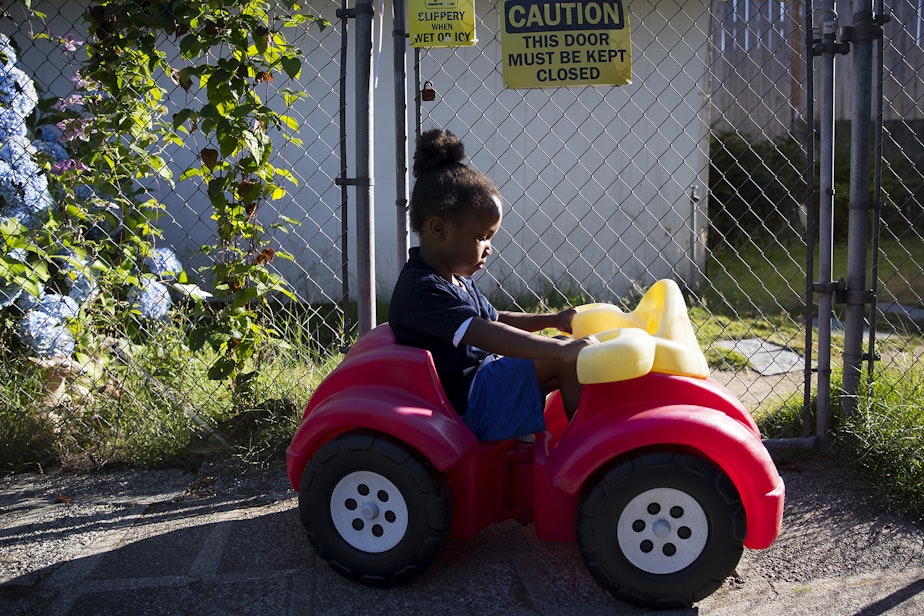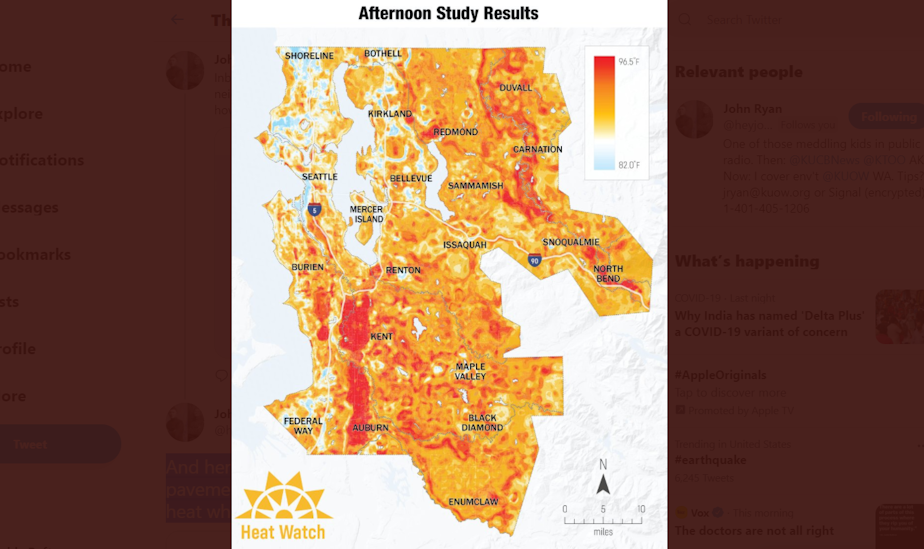Heat wave could hit Seattle area neighborhoods differently – possible 20 degrees difference

The heat wave expected this weekend in western Washington won’t hit everyone the same.
During a hot spell last July, some neighborhoods saw a 20-degree difference.
“That Renton-Kent-Auburn corridor really popped out,” said Lara Whitely Binder, a climate adaptation scientist with King County. “Temperatures were in the mid to upper 90s.”
Other hot spots included the Duwamish Valley, Redmond, and areas around Sea-Tac Airport.
Here's how the very hot afternoon of July 28, 2020 looked:

Sponsored
And here's how that evening looked. The concrete and pavement of south King County retained that daytime heat while leafier areas cooled off, offering some relief.

Binder noted that the heatwave in the study lasted a day, while the impending heat wave is expected to last several days, making nighttime cooling more important.
Earlier studies in Tacoma and other cities have found that "redlined" neighborhoods—areas that mortgage lenders in decades past deemed too risky for loans because people of color lived there—are usually hotter in the summer than wealthier neighborhoods.
Sponsored
“Across 108 cities, those areas were 5 degrees Fahrenheit warmer than their counterpart areas,” said Vivek Shandas, an urban planning professor at Portland State University. He spoke to KUOW last summer.
“There is a very clear environmental justice dimension. This is a systematic pattern,” Shandas said.
While western Washington's summers are mild compared to most of the country's, we're unprepared for heat when it does come.
Only a third of homes in King County have air conditioning.
"We're so used to a more moderate summer climate that we become particularly vulnerable to these types of heat events," Binder said. "We're not really well adapted for the heat."
Sponsored
Seattle and King County hired Shandas’s consulting firm, CAPA Strategies, to help map the county’s urban heat islands.
The firm mapped Tacoma’s hot spots in 2019. When waterfront areas reached 82 degrees in mid-afternoon, other parts of town hit 94.
King County officials say the mapping will help them direct trees, green spaces, spray parks, cooling centers and energy-efficiency retrofits to the neighborhoods where they are most needed.
Doing so could both protect vulnerable populations and reduce strain on the region’s electrical grid from expanded use of energy-intensive air conditioners.
Shandas said many of the redlined areas that tend to heat up the most sit next to large industrial parks, highways and big-box stores.
Sponsored
“When one group said, ‘not in my back yard,’ another group said that in not-as-loud as a voice, and they ended up receiving those developments,” he said.
Those developments are heat magnets. “The concrete and the asphalt laid down in those areas was really driving what was happening in the adjacent areas,” he said.
While newly planted trees might take a decade or more to provide much shade, measures like replacing dark roofs with light roofs can provide immediate relief from the heat.
Those measures would do little to address the global emissions of greenhouse gases that are heating the planet and making heat waves more extreme and more frequent.
But most climate watchers now agree that learning to adapt to a hotter world is every bit as necessary as transitioning away from the fossil fuels that are destabilizing our world.




